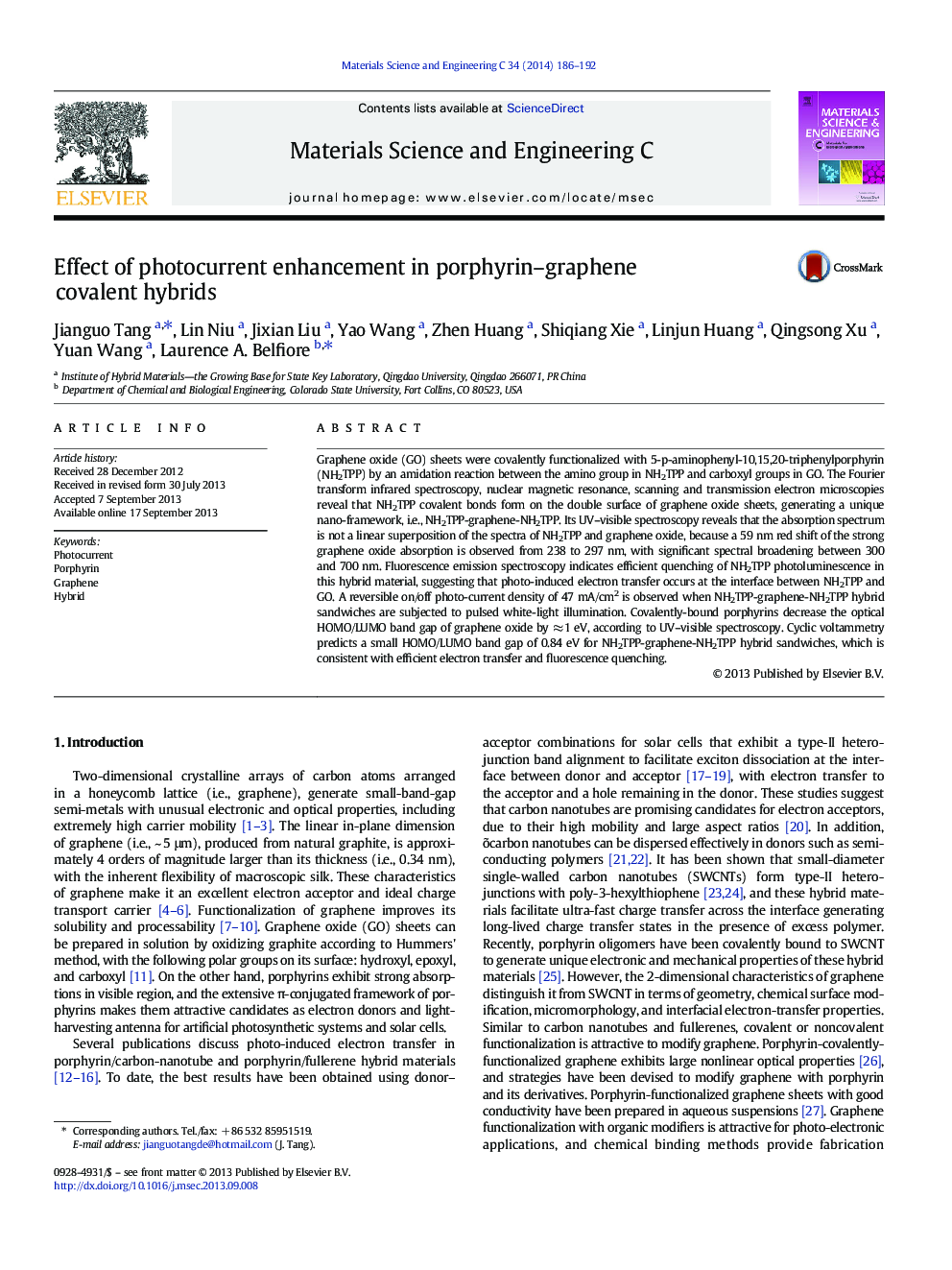| Article ID | Journal | Published Year | Pages | File Type |
|---|---|---|---|---|
| 7870272 | Materials Science and Engineering: C | 2014 | 7 Pages |
Abstract
Graphene oxide (GO) sheets were covalently functionalized with 5-p-aminophenyl-10,15,20-triphenylporphyrin (NH2TPP) by an amidation reaction between the amino group in NH2TPP and carboxyl groups in GO. The Fourier transform infrared spectroscopy, nuclear magnetic resonance, scanning and transmission electron microscopies reveal that NH2TPP covalent bonds form on the double surface of graphene oxide sheets, generating a unique nano-framework, i.e., NH2TPP-graphene-NH2TPP. Its UV-visible spectroscopy reveals that the absorption spectrum is not a linear superposition of the spectra of NH2TPP and graphene oxide, because a 59 nm red shift of the strong graphene oxide absorption is observed from 238 to 297 nm, with significant spectral broadening between 300 and 700 nm. Fluorescence emission spectroscopy indicates efficient quenching of NH2TPP photoluminescence in this hybrid material, suggesting that photo-induced electron transfer occurs at the interface between NH2TPP and GO. A reversible on/off photo-current density of 47 mA/cm2 is observed when NH2TPP-graphene-NH2TPP hybrid sandwiches are subjected to pulsed white-light illumination. Covalently-bound porphyrins decrease the optical HOMO/LUMO band gap of graphene oxide by â 1 eV, according to UV-visible spectroscopy. Cyclic voltammetry predicts a small HOMO/LUMO band gap of 0.84 eV for NH2TPP-graphene-NH2TPP hybrid sandwiches, which is consistent with efficient electron transfer and fluorescence quenching.
Keywords
Related Topics
Physical Sciences and Engineering
Materials Science
Biomaterials
Authors
Jianguo Tang, Lin Niu, Jixian Liu, Yao Wang, Zhen Huang, Shiqiang Xie, Linjun Huang, Qingsong Xu, Yuan Wang, Laurence A. Belfiore,
